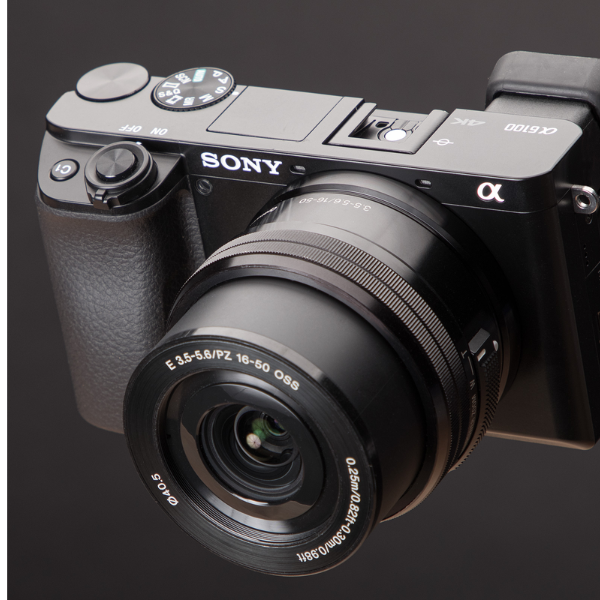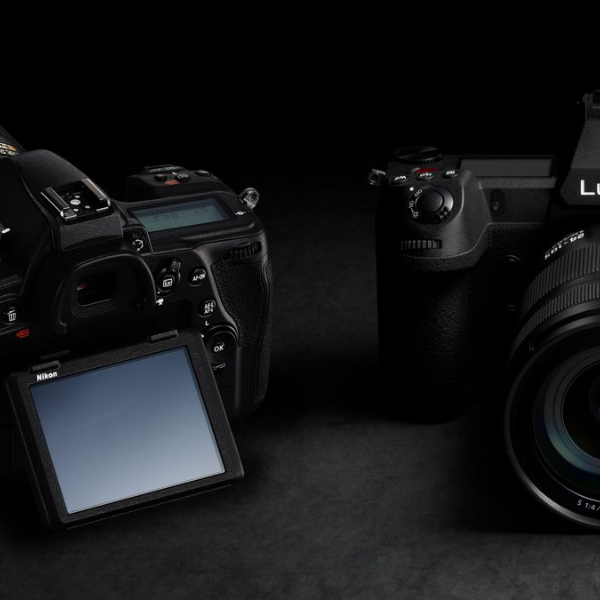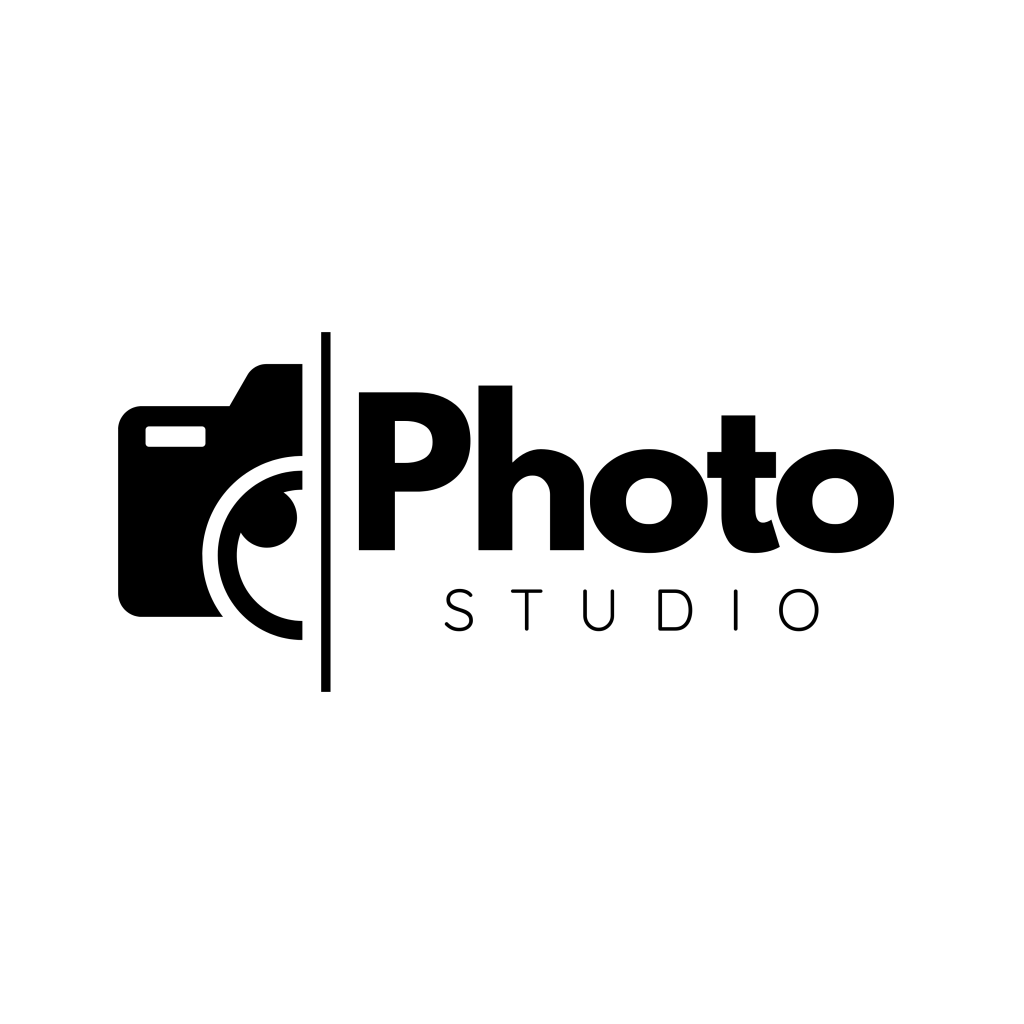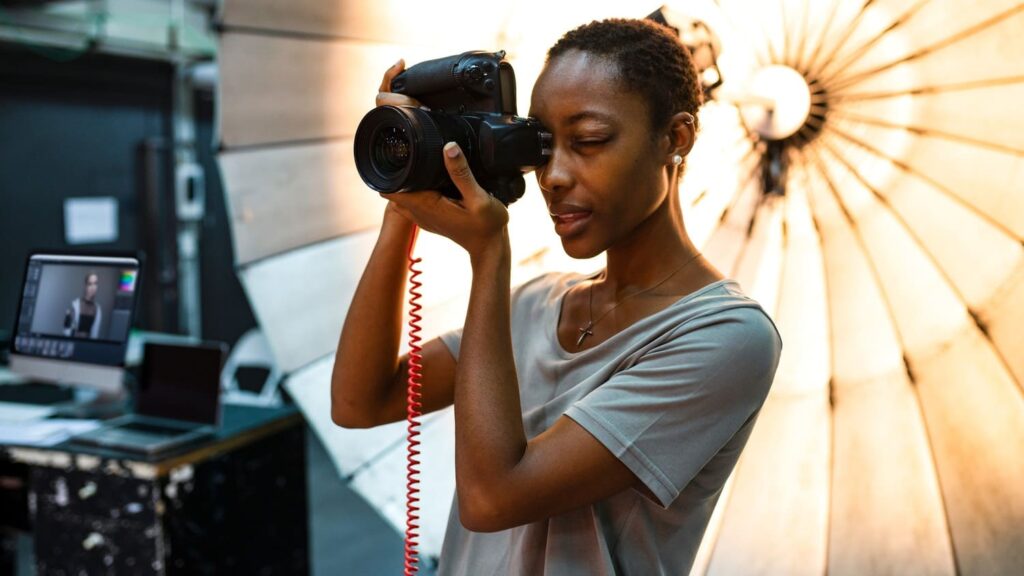Uncategorized
Discover the Best Mirrorless Cameras for 2024
Discover the Best Mirrorless Cameras for 2024
Mirrorless cameras continue to revolutionize photography, offering cutting-edge technology, compact designs, and versatile features for photographers and videographers alike. Whether you’re a beginner, enthusiast, or professional, 2024 brings a lineup of impressive mirrorless options tailored to various needs and budgets.
Here’s a curated guide to the best mirrorless cameras of 2024, focusing on performance, usability, and innovation.
1. Sony Alpha a7 IV – Best All-Around Mirrorless Camera
The Sony Alpha a7 IV strikes a perfect balance between photography and videography, making it a top choice for hybrid shooters.

Key Features of the Sony Alpha a7 IV
1. 33MP Full-Frame Sensor
- The 33MP Exmor R CMOS sensor delivers excellent image quality with sharpness, detail, and vibrant colors. It strikes a balance between high resolution and low-light performance.
- The sensor also features backside illumination (BSI), which improves performance in low-light situations by reducing noise.
2. Advanced Autofocus System
- 759 Phase Detection points cover approximately 94% of the frame, ensuring fast and precise autofocus even on moving subjects.
- The Real-Time Eye AF for both humans and animals ensures that portraits and wildlife photography are razor-sharp, with eye detection working even in challenging lighting conditions.
- The Real-Time Tracking feature uses AI to intelligently track subjects, improving focus accuracy during fast-moving scenes.
3. 10-bit 4:2:2 Video Recording
- The a7 IV supports 4K video recording at up to 60p, capturing rich detail and vibrant colors, making it an ideal choice for filmmakers.
- 10-bit 4:2:2 color depth allows for greater flexibility in post-production, resulting in smoother color grading and enhanced detail.
- It also offers S-Cinetone for cinematic color and S-Log3 for professional-grade video editing, giving you a wide dynamic range and more options when fine-tuning footage.
4. Dual Card Slots (CFexpress Type A and SD UHS-II)
- The camera includes dual memory card slots, providing flexibility and redundancy for photographers and videographers who need to manage large files or require backup during important shoots.
5. In-Body Image Stabilization (IBIS)
- The 5-axis in-body image stabilization (IBIS) reduces camera shake and allows for smoother handheld shots, especially when shooting at slower shutter speeds or in low light. This feature is a significant benefit for both stills and video.
6. 3-inch Vari-angle LCD Touchscreen
- The 3-inch, 1.03M-dot vari-angle LCD touchscreen makes it easy to compose shots from various angles, especially for vloggers, content creators, and photographers working in challenging positions.
- The touch functionality allows for intuitive control over focus and settings.
7. Dual ISO (Low and High Sensitivity Range)
- The a7 IV offers dual native ISO, allowing it to perform well in both low-light environments (ISO 50–102,400, expandable to ISO 204,800) and bright daylight without excessive noise.
8. 10 fps Continuous Shooting Speed
- The camera boasts 10 frames per second (fps) continuous shooting speed with the electronic shutter, making it suitable for action, wildlife, and sports photography.
- This is paired with a buffer depth that allows you to capture a large number of frames without slowing down.
9. 15-Stop Dynamic Range (S-Log3)
- The a7 IV can capture up to 15 stops of dynamic range, particularly useful for high-contrast scenes, ensuring that both highlight and shadow details are preserved.
10. Connectivity and Workflow Integration
- Wi-Fi, Bluetooth, and USB-C connectivity make it easy to transfer files, control the camera remotely, or integrate it into a live-streaming or studio environment.
- The camera supports live-streaming directly from the camera via USB, which is great for content creators.
Advantages of the Sony Alpha a7 IV
1. Versatility
- The Sony a7 IV excels at both photo and video, making it a versatile tool for hybrid creators who require high-quality performance in both disciplines.
2. Superior Image Quality
- Thanks to its 33MP full-frame sensor and impressive dynamic range, the a7 IV delivers rich detail, accurate color reproduction, and outstanding low-light performance. The images are sharp, clean, and full of tonal range.
3. Excellent Autofocus
- The fast, reliable, and accurate autofocus system makes it ideal for fast-moving subjects, including sports, wildlife, and street photography. The Eye AF for both humans and animals ensures that portraits are always crisp.
4. Advanced Video Features
- The camera’s video features, such as 4K recording, S-Log3, and 10-bit 4:2:2, make it a powerhouse for filmmakers. The cinematic look it produces right out of the camera makes post-production easier.
5. Future-Proofed Design
- With support for high-speed memory cards like CFexpress Type A, the a7 IV is ready for demanding workflows, making it a future-proof investment for professionals.
6. Ease of Use
- The ergonomics and menu system are user-friendly, making it easy to adjust settings on the fly. The vari-angle screen is perfect for vlogs and selfie shots.
Disadvantages of the Sony Alpha a7 IV
1. Price
- The a7 IV is on the higher end of the price spectrum, making it more expensive compared to entry-level mirrorless cameras. However, its performance and feature set justify the cost for many professionals.
2. Battery Life
- While improved compared to earlier models, the battery life might not be sufficient for full-day shooting without a backup. The use of features like continuous video recording and high-frame-rate shooting can drain the battery quickly.
3. Learning Curve
- With so many advanced features and customizable settings, the camera may have a steep learning curve for those new to Sony mirrorless cameras or those upgrading from a simpler model.
Who Is the Sony Alpha a7 IV For?
The Sony Alpha a7 IV is ideal for hybrid shooters, including:
- Professional photographers who need exceptional performance in stills and video.
- Content creators such as YouTubers, vloggers, and filmmakers who need versatile video features.
- Enthusiasts who want to invest in a high-performance camera capable of handling a wide range of genres, from portrait and landscape photography to action and sports.
Conclusion
The Sony Alpha a7 IV is a standout all-around mirrorless camera that combines powerful features for both photography and videography. Whether you’re capturing stunning stills, shooting cinematic video, or producing hybrid content, the a7 IV offers superb quality, reliable autofocus, and robust video options, making it an excellent choice for serious creators and professionals.
Key Features:
- Sensor: 33MP full-frame CMOS.
- Video: 4K at up to 60fps.
- Autofocus: Real-time tracking and Eye AF.
- ISO Range: 100–51,200 (expandable).
- Connectivity: Wi-Fi, Bluetooth, USB-C.
Why It’s Great:
- Exceptional image quality for both photos and videos.
- Versatile autofocus system for precise subject tracking.
- User-friendly ergonomics and menu system.
2. Canon EOS R8 – Best Value Full-Frame Mirrorless
The Canon EOS R8 combines advanced features with an affordable price point, making it ideal for enthusiasts upgrading to full-frame photography.

Key Features of the Canon EOS R8
1. 24.2MP Full-Frame CMOS Sensor
- The 24.2MP full-frame CMOS sensor captures highly detailed images with excellent dynamic range, color accuracy, and low-light performance. It strikes a balance between high resolution and manageable file sizes, making it ideal for both photography and video.
2. Dual Pixel CMOS AF II
- The Dual Pixel CMOS AF II system is incredibly fast and reliable, with 1,053 autofocus points that cover a large portion of the frame. It offers eye, face, and animal detection, ensuring sharp focus on subjects, even in fast-moving situations.
- The system supports both still photography and video, making it perfect for hybrid shooters.
3. 4K 60p Video Recording
- The EOS R8 supports 4K video recording at up to 60fps without any crop, delivering smooth, cinematic footage with impressive detail. The 10-bit 4:2:2 color profile allows for more flexibility in post-production, making it a great choice for content creators.
- It also offers 1080p recording at 120fps, which is perfect for slow-motion video.
4. 5-axis In-Body Image Stabilization (IBIS)
- The 5-axis in-body image stabilization minimizes camera shake during handheld shooting, ensuring smoother video and sharper stills, especially when shooting at slower shutter speeds or in low-light conditions.
5. Continuous Shooting at 40 fps (Electronic Shutter)
- The EOS R8 boasts an impressive 40fps continuous shooting speed using the electronic shutter, making it an excellent choice for action, sports, or wildlife photography.
- With this burst rate, you can capture fast-moving subjects with precision, ensuring you don’t miss any crucial moments.
6. Vari-Angle LCD Touchscreen
- The 3-inch vari-angle LCD touchscreen offers flexibility when composing shots from difficult angles, making it an ideal choice for vloggers, content creators, or photographers working in tight spaces or shooting from low or high perspectives.
- It also supports intuitive touch controls, including touch-to-focus and menu navigation.
7. Compact and Lightweight Design
- Weighing just 461 grams (16.3 oz), the EOS R8 is incredibly lightweight for a full-frame camera, making it perfect for travel, street photography, or any type of photography that requires mobility and convenience.
- The compact size makes it easier to handle for long shoots or carry around without sacrificing performance.
8. Advanced Connectivity Options
- The camera includes Wi-Fi, Bluetooth, and USB-C for easy wireless transfer of images and remote shooting. The HDMI output allows for high-quality live streaming or external monitor use.
- The Canon Camera Connect app also allows for seamless remote control and file transfer, making it easy to manage your workflow.
Advantages of the Canon EOS R8
1. Affordable Full-Frame Performance
- The EOS R8 offers full-frame imaging at a price that’s far more affordable than other full-frame mirrorless cameras in Canon’s lineup. It gives you access to Canon’s full-frame quality, excellent autofocus, and impressive video features without breaking the bank.
2. Excellent Autofocus System
- The Dual Pixel CMOS AF II system is one of the standout features of the EOS R8, offering fast and accurate focusing for both stills and video. The ability to track moving subjects with ease and detect eyes, faces, and animals makes it incredibly versatile.
3. Video Capabilities
- The 4K 60p video recording, 10-bit 4:2:2 color profile, and 1080p at 120fps provide flexibility for content creators and filmmakers, giving them professional-grade video features at an affordable price.
4. Compact and Lightweight
- The small, lightweight design makes the EOS R8 an excellent choice for photographers who need a portable camera for travel or everyday shooting. It’s easy to carry around and perfect for on-the-go use without sacrificing performance.
5. In-Body Image Stabilization (IBIS)
- The 5-axis IBIS ensures steady handheld shots and smooth video, making it easier to capture sharp images even in low-light situations or without a tripod.
Disadvantages of the Canon EOS R8
1. Limited Viewfinder
- The electronic viewfinder (EVF) on the EOS R8 is smaller compared to more expensive models like the Canon EOS R5 or R6. Some users might prefer the more robust and higher-resolution viewfinders found in premium models for a better viewing experience.
2. No 2nd Card Slot
- The EOS R8 only has one memory card slot, which may be limiting for professionals who require backup or redundancy for important shoots.
3. Limited Weather Sealing
- While the camera is designed to be portable and lightweight, it lacks the full weather sealing found in higher-end models. It may not be the best choice for photographers working in harsh or extreme weather conditions.
4. No In-Body Flash
- The EOS R8 lacks an integrated pop-up flash, so users will need to rely on external flash units for lighting in certain situations.
Who Is the Canon EOS R8 For?
The Canon EOS R8 is ideal for:
- Hybrid photographers and content creators who want a lightweight and affordable full-frame mirrorless camera capable of both high-quality stills and video.
- Vloggers, YouTubers, and social media influencers looking for a compact camera with a vari-angle screen and excellent autofocus for easy self-shooting and professional-quality content.
- Enthusiast photographers who want to experience full-frame image quality without the high price tag of more premium models.
- Travel photographers and street photographers who need a portable, all-around camera for capturing moments on the go.
Conclusion
The Canon EOS R8 is a remarkable full-frame mirrorless camera that offers excellent value for money. With its 24.2MP full-frame sensor, fast autofocus system, 4K video capabilities, and compact design, it provides an impressive range of features for photographers and videographers who want high-quality results without spending a fortune. Whether you’re just starting out or are an experienced hybrid shooter looking for a versatile and affordable camera, the Canon EOS R8 delivers a performance that’s hard to beat at its price point.
Key Features:
- Sensor: 24.2MP full-frame CMOS.
- Video: 4K at 60fps (10-bit).
- Autofocus: Dual Pixel CMOS AF II.
- Burst Shooting: 40fps electronic shutter.
Why It’s Great:
- Compact and lightweight for travel and everyday use.
- Powerful autofocus system for reliable subject tracking.
- Excellent dynamic range and low-light performance.
3. Fujifilm X-T5 – Best APS-C Mirrorless Camera
Fujifilm’s X-T5 brings its retro-inspired design and outstanding imaging capabilities to photographers who value portability and creative control.
Key Features:
- Sensor: 40.2MP APS-C X-Trans 5 HR CMOS.
- Video: 6.2K at 30fps.
- In-Body Stabilization: 7 stops of IBIS.
- Film Simulations: 19 modes for creative looks.
Why It’s Great:
- High-resolution sensor with exceptional detail.
- Compact and weather-sealed for outdoor shooting.
- Unique film simulations for instant artistic flair.
4. Nikon Z9 – Best for Professional Photography
The Nikon Z9 redefines professional mirrorless photography with industry-leading specs, perfect for sports, wildlife, and high-end commercial work.
Key Features:
- Sensor: 45.7MP stacked CMOS.
- Video: 8K at 60fps; 4K at 120fps.
- Autofocus: 493-point phase-detection AF.
- Burst Shooting: 120fps at 11MP.
Why It’s Great:
- Stunning image quality with minimal rolling shutter.
- Advanced subject recognition for various scenarios.
- Built like a tank with weather-sealing and pro-grade build.
5. Panasonic Lumix S5 II – Best for Video Creators
The Panasonic Lumix S5 II is a game-changer for content creators, offering robust video capabilities in a compact body.
Key Features:
- Sensor: 24.2MP full-frame CMOS.
- Video: 6K at 30fps; 4K at 60fps.
- Autofocus: Phase-detection AF.
- Stabilization: Dual IS for smooth footage.
Why It’s Great:
- Superior video performance with unlimited recording.
- Reliable autofocus, a significant upgrade over previous models.
- Compact and versatile for on-the-go shooting.
6. OM System OM-1 – Best for Outdoor and Adventure Photography
The OM System OM-1, from the former Olympus brand, is a Micro Four Thirds powerhouse built for adventure photographers.
Key Features:
- Sensor: 20.4MP stacked BSI Live MOS.
- Video: 4K at 60fps.
- Burst Shooting: 120fps for fast action.
- Weather-Sealed: IP53 rating for extreme conditions.
Why It’s Great:
- Compact and lightweight for travel and hiking.
- Incredible weather sealing for rugged environments.
- High-speed performance for wildlife and action shots.
7. Sony Alpha ZV-E1 – Best Mirrorless Camera for Vlogging
Sony’s Alpha ZV-E1 caters specifically to content creators, offering intuitive features and outstanding video quality.
Key Features:
- Sensor: 12MP full-frame CMOS.
- Video: 4K at 120fps.
- Autofocus: Real-time tracking with AI.
- Connectivity: Wi-Fi and streaming capabilities.
Why It’s Great:
- Compact design tailored for vlogging.
- Superior stabilization for smooth handheld videos.
- AI-powered tools for framing and subject tracking.
8. Leica SL2-S – Best for Premium Build and Style
The Leica SL2-S combines timeless design with modern performance, appealing to photographers who prioritize aesthetics and quality.
Key Features:
- Sensor: 24MP full-frame CMOS.
- Video: 4K at 60fps (10-bit).
- Build: Weather-sealed, magnesium body.
- Interface: Simple and intuitive menus.
Why It’s Great:
- Luxurious build quality with exceptional optics.
- Simplified controls for an unparalleled shooting experience.
- Perfect for portrait and documentary photography.
9. Canon EOS R50 – Best Entry-Level Mirrorless
The Canon EOS R50 is an excellent choice for beginners exploring the world of mirrorless photography.
Key Features:
- Sensor: 24.2MP APS-C CMOS.
- Video: 4K at 30fps.
- Autofocus: Dual Pixel CMOS AF II.
- Weight: Just 375g.
Why It’s Great:
- Affordable and easy to use for newcomers.
- Compact size, perfect for travel and everyday shooting.
- Advanced autofocus features in an entry-level package.
10. Sigma fp L – Best Compact Mirrorless Camera
The Sigma fp L is the world’s smallest and lightest full-frame camera, offering unique features for creative photographers.
Key Features:
- Sensor: 61MP full-frame CMOS.
- Video: 4K at 30fps (CinemaDNG RAW).
- Modularity: Fully customizable design.
Why It’s Great:
- Incredible resolution in a compact package.
- Modular build for personalized setups.
- Great for creative and experimental photography.
How to Choose the Right Mirrorless Camera
- Define Your Purpose: Are you focused on photography, videography, or both?
- Sensor Size: Full-frame for maximum quality, APS-C or Micro Four Thirds for portability.
- Autofocus Performance: Crucial for fast-moving subjects.
- Video Features: Look for 4K or higher if you’re creating video content.
- Budget: Determine what features you need within your price range.
Conclusion
The best mirrorless camera for you depends on your specific needs, whether it’s high-speed performance, superior video capabilities, or compact design for travel. With advancements in technology, 2024’s mirrorless camera lineup ensures there’s something for every photographer and creator. Start exploring today and find the perfect tool to capture your vision!


